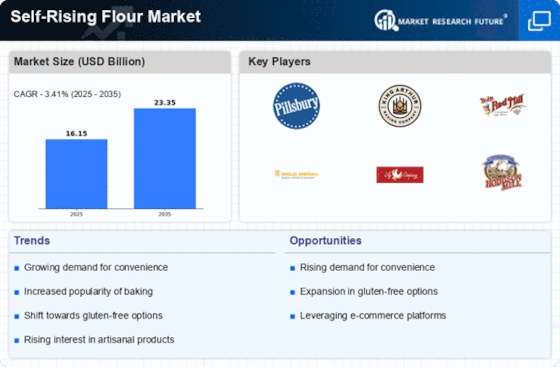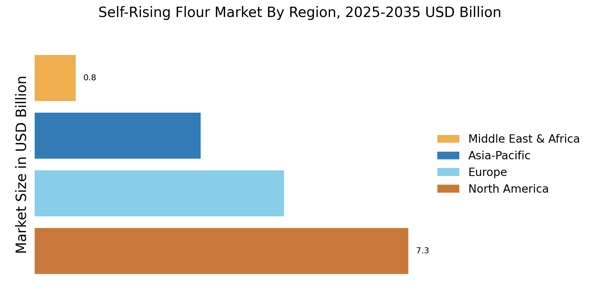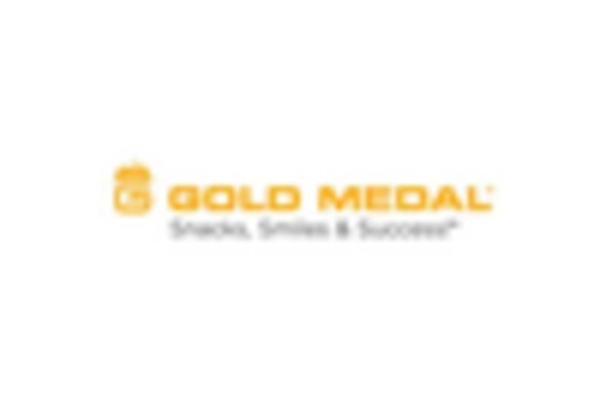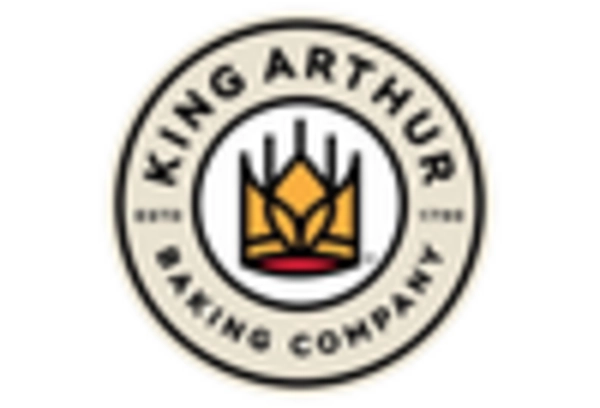E-Commerce Expansion
The Self-Rising Flour Market is witnessing a significant transformation driven by the expansion of e-commerce platforms. As consumers increasingly turn to online shopping for convenience, the availability of self-rising flour through various digital channels has become more pronounced. Recent statistics reveal that e-commerce sales in the food sector have surged by approximately 30%, highlighting a shift in purchasing behavior. This trend is particularly beneficial for niche brands and smaller producers who can reach a broader audience without the constraints of traditional retail. The Self-Rising Flour Market is thus likely to see enhanced sales and brand visibility as e-commerce continues to grow. This shift not only facilitates consumer access to a wider range of products but also encourages innovation within the industry as companies adapt to the digital marketplace.
Health-Conscious Choices
In the context of the Self-Rising Flour Market, there is a growing inclination towards health-conscious choices among consumers. As awareness of dietary habits increases, many individuals are seeking alternatives that align with their health goals. This has led to a rise in demand for self-rising flour that incorporates whole grains, gluten-free options, and organic ingredients. Market data indicates that products labeled as organic have seen a price premium of around 15%, reflecting consumer willingness to invest in healthier options. The Self-Rising Flour Market is adapting to these preferences by diversifying its product offerings to include healthier variants. This shift not only caters to the evolving consumer base but also positions the industry favorably in a competitive landscape where health and wellness are paramount.
Convenience and Home Baking
The Self-Rising Flour Market is experiencing a notable surge in demand due to the increasing trend of home baking. As consumers seek convenience in their cooking endeavors, self-rising flour offers a time-saving solution by combining flour, baking powder, and salt in one product. This trend is particularly pronounced among millennials and younger generations who are exploring culinary skills at home. According to recent data, the home baking segment has seen a growth rate of approximately 20% annually, indicating a robust interest in baking products. The Self-Rising Flour Market is thus positioned to benefit from this shift, as more individuals opt for easy-to-use ingredients that simplify the baking process. This trend is likely to continue, suggesting a sustained demand for self-rising flour in the foreseeable future.
Culinary Trends and Innovations
The Self-Rising Flour Market is significantly influenced by evolving culinary trends and innovations. As chefs and home cooks experiment with new recipes and techniques, the demand for versatile baking ingredients has increased. Self-rising flour, with its unique formulation, allows for a variety of applications beyond traditional baking, including pancakes, biscuits, and even savory dishes. Market analysis suggests that the versatility of self-rising flour is driving its adoption in diverse culinary settings. Furthermore, the rise of social media platforms has amplified the visibility of innovative recipes, encouraging consumers to explore self-rising flour in their cooking. This trend indicates a potential for sustained growth within the Self-Rising Flour Market as culinary creativity continues to flourish.
Sustainability and Ethical Sourcing
Sustainability has emerged as a pivotal driver within the Self-Rising Flour Market, as consumers increasingly prioritize ethical sourcing and environmentally friendly practices. The demand for sustainably produced ingredients is reshaping the market landscape, with consumers seeking products that align with their values. Recent surveys indicate that approximately 70% of consumers are willing to pay more for products that are sustainably sourced. This trend is prompting manufacturers within the Self-Rising Flour Market to adopt sustainable practices, such as sourcing ingredients from local farms and reducing packaging waste. As sustainability becomes a core value for consumers, the industry is likely to see a shift towards more eco-friendly products, which could enhance brand loyalty and attract a conscientious consumer base.



















Leave a Comment